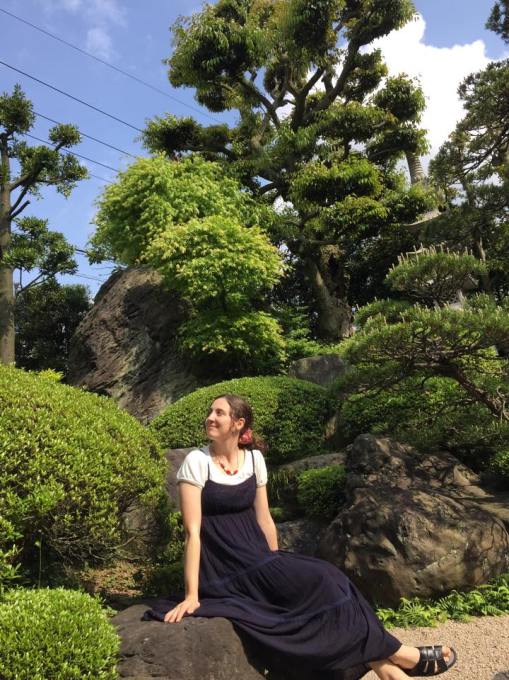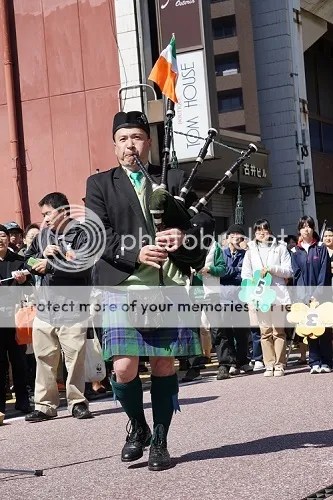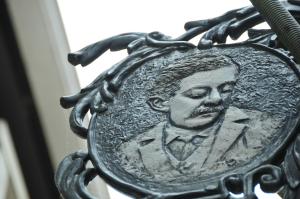I’ve blatantly borrowed this title from one of Lafcadio Hearn‘s most famous essays, published in The Atlantic in 1892. A lot of the essay is a detailed and flowery (ha!) description of his garden at his second residence in Matsue–preserved now as it was in Hearn’s day–and is quoted at Japanese gardens around the world, and at least two of which, in New Orleans and Tramore, bear his namesake.
I like Japanese gardens, but I don’t think I can–or would–go into such detail as Lafcadio Hearn. Looking back at this text, so characteristic of his style with his rich descriptions, heavy amount of information, cultural fancies, and fascination for even the lowliest of life forms–or forms that have taken on a life of their own–I can see how he was still in his honeymoon period in Japan when he wrote this. As much glowing praise as his prose gets from Japanese readers and criticism he gets from cynical Western scholars, the fact of the matter is that Lafcadio Hearn really enjoyed that garden in a time when he really enjoyed Japan after he had been anticipating enjoying Japan for quite some time. Furthermore, the words he wrote about Japanese gardens have long survived him and reached the sensitive sides of people’s souls throughout the world.
Perhaps my appreciation for Japanese gardens is not as honed and sensitive as Hearn’s, but you do appreciate them more as you learn more about them and the thought behind their designs. The basic idea that both an expansive Japanese garden like that of the Adachi Museum of Art and a tiny bonsai garden are meant to mimic a natural landscape is already enough to take you from one stage of appreciation to another, and the little details I’ve picked up about traits of Izumo style gardens, such as the elevated rock stepping-stones to keep the hems of kimono more dry in the rain and snow and the use of black pines, give me little things to enjoy looking for when I visit new gardens.
The San’in region is home to a few famous ones, even the garden of Kasuien Minami, a fancy ryokan in the Tamatsukuri Onsen area, has one of the top ranked gardens in Japan. My personal favorite is Yuushien Japanese Garden, famous for its array of peonies (and generally being a gorgeous setting for a stroll any time of year). I went out to see the peony festival again this year with a friend, and the fragrance of the thousands and thousands of peony blossoms, especially those covering the surface of the pond, was once again something that could have induced sweet spring dreams.

Afterward, my friend and I hopped over the Eshima Bridge (that one that looks scary and now has a temporary parking lot just for the people who came out to photograph it) to Tottori to do some shopping, and in the later afternoon hours my friend decided we should stop by her grandmother’s house to get pictures of the kirishima (a type of rhododendron) blooming in her garden. I’ve been to her grandmother’s house a few times before, and I’ve seen the garden, but never really looked at it.
It occurred to me on this visit just how quintessentially Japanese my friend’s family is. I have the pleasure of visiting every few months and have enjoyed seasonal pleasures such as youkan ice cream from Kiyomizu Temple (the Yasugi one, not the Kyoto one), picking home-grown shiitake mushrooms in the forest, viewing three full sets of Girl’s Day dolls, and so on. At her grandmother’s house, we always go straight down the hall to the guest room. The hall has a wood floor, to the right are glass doors and windows looking out on the garden, to the left are the sliding doors to the airy tatami room filled with natural light. There is a vase set on a shelf at one end, and a wooden structure at the far corner of the hallway, and they are both decorated with a few seasonal flowers.
The guest room has a wide, but low table that follows the natural features of the wood, holes and everything, but glossy and warm in tones like the rest of the wood in the house. There are statues and vases and such decorating the wall opposite the garden, and a folding screen with a bird and a few seasonal flowers that would be blooming right around the same time in real life. My friend’s grandmother wasn’t expecting me, and she’s in the adjoining room laying out a few extra sweets to go with the snack she had already prepared to go with the tea. As usual, she’s got everything ready to offer us both the customary two cups of matcha.
And, as usual, we all chill out in the guest room and chat and enjoy our tea and snacks, with no electronic distractions or even any noticeable clock to take our minds away from the moment.
Speaking of timing, we were too late to see the red kirishima bushes in full bloom, as they, like many other flowers, were early this year. Nonetheless, there are still splatters of coral color among the green leaves, and for the greater part of our conversation, a white butterfly with black lines has been ecstatically sampling and savoring them. My friend is none the less very disappointed that we missed full bloom, as apparently that is one of her favorite times to see that garden she’s been visiting with her sisters and cousins for as far back as she can remember. The two of them show me an old photo of them out there, and reminisce about times in the garden, and how it had already been two decades or so since they replaced the koi pond with gravel so that none of the small children would fall in.
The garden, like the guest room, is in meticulously cared for condition. The rocks and gravel are clean in the sunlight, the trees are shapely and full. While I’m still enjoying the sight of the feasting butterfly, their focus shifts to the lush maple tree, fluttering its young, bright yellow-green leaves in the wind. The shadows the leaves make against the large rock behind it are lively.
I’m still at the table while they go to window, and her grandmother kneels in the hallway while my friend borrows her grandfather’s sandals to go get a better look at the maple leaves. Their silhouettes and expressions in the warm afternoon light make me smile at how picturesque they are, and then her grandmother invites me over to enjoy the view and the breeze. They’re both indeed very nice, about as nice as I always pictured this fairy land I dreamed about for years before ever visiting. I’ve been a guest in many other quintessentially Japanese abodes before, including during my own honeymoon period of sorts, but having spent a lot more time around Japan now I have a very different way of looking at this country and culture now. The Japan that I–and other foreigners, and even Japanese people themselves–love to romanticize about does exist, but it’s not a part of everyone’s daily life. For many, Japanese gardens and serving tea to guests, or even having tatami mats is not even a thought in their given or chosen lifestyles. While there are parts of culture that are distinctly Japanese, they are not deeply relevent to many Japanese people, just as much as things like hamburgers and college basketball are major parts of American culture but not ones deeply relevant to me. This is neither positive nor negative, it’s simply things as they are.
Still, I enjoyed being in such a quintessentially Japanese setting, speaking in Japanese with Japanese friends, an experience that would be rare if I lived elsewhere. I could have enjoyed the sunshine and the greenery and the fresh air in a number of other places, or enjoyed snacks and company in any variety of tastes and cultures. Perhaps what really felt so refreshing this time was that I took the chance to notice it, even if not the same level of detail that Hearn observed his Japanese garden.
Right before we left, the butterfly was making friends with another like it, and they fluttered further and further away from the ending kirishima flowers. Just another passing moment, never to be captured again in any haiku, photography, essay, or blog post.



































